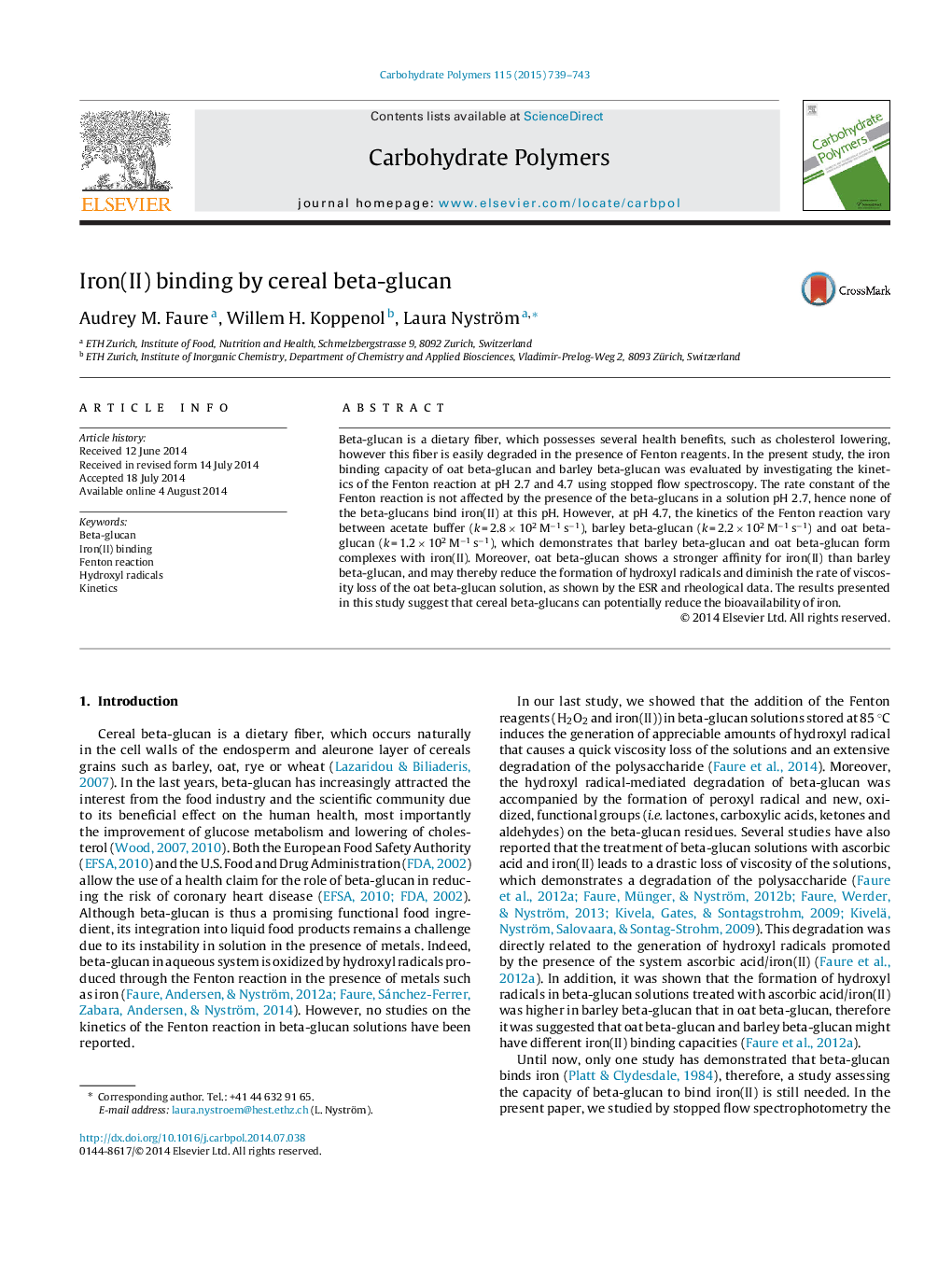| Article ID | Journal | Published Year | Pages | File Type |
|---|---|---|---|---|
| 7790749 | Carbohydrate Polymers | 2015 | 5 Pages |
Abstract
Beta-glucan is a dietary fiber, which possesses several health benefits, such as cholesterol lowering, however this fiber is easily degraded in the presence of Fenton reagents. In the present study, the iron binding capacity of oat beta-glucan and barley beta-glucan was evaluated by investigating the kinetics of the Fenton reaction at pH 2.7 and 4.7 using stopped flow spectroscopy. The rate constant of the Fenton reaction is not affected by the presence of the beta-glucans in a solution pH 2.7, hence none of the beta-glucans bind iron(II) at this pH. However, at pH 4.7, the kinetics of the Fenton reaction vary between acetate buffer (k = 2.8 Ã 102 Mâ1 sâ1), barley beta-glucan (k = 2.2 Ã 102 Mâ1 sâ1) and oat beta-glucan (k = 1.2 Ã 102 Mâ1 sâ1), which demonstrates that barley beta-glucan and oat beta-glucan form complexes with iron(II). Moreover, oat beta-glucan shows a stronger affinity for iron(II) than barley beta-glucan, and may thereby reduce the formation of hydroxyl radicals and diminish the rate of viscosity loss of the oat beta-glucan solution, as shown by the ESR and rheological data. The results presented in this study suggest that cereal beta-glucans can potentially reduce the bioavailability of iron.
Related Topics
Physical Sciences and Engineering
Chemistry
Organic Chemistry
Authors
Audrey M. Faure, Willem H. Koppenol, Laura Nyström,
